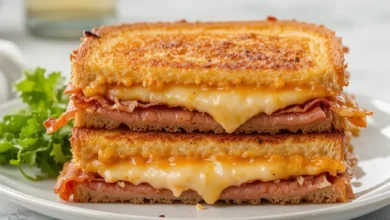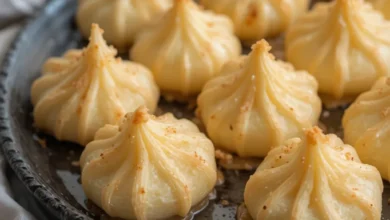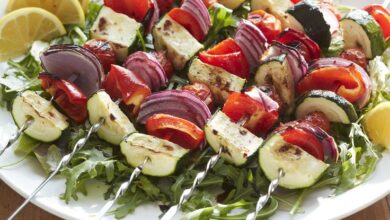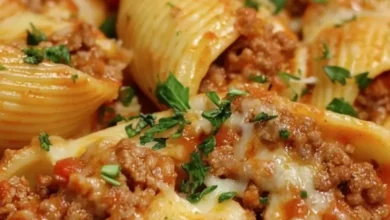Zesty Lemon Herb Salmon: Your Ultimate Guide to a Flawless, Healthy Feast

There’s something undeniably special about a perfectly cooked piece of salmon. It’s flaky, moist, and packed with rich, satisfying flavor. But what if you could transform this weeknight staple into a show-stopping, restaurant-quality dish that’s both incredibly healthy and deceptively simple to make? Enter this Zesty Lemon Herb Salmon recipe.
This isn’t just another salmon dish; it’s a vibrant, tangy, and aromatic experience. The bright acidity of fresh lemon cuts through the salmon’s natural oils, while a medley of fragrant herbs creates a symphony of flavor in every bite. Best of all, this dish comes together in under 30 minutes, making it the perfect solution for a busy Tuesday or an impressive dinner party centerpiece. Whether you’re a seasoned home cook or just starting your culinary journey, this guide will walk you through every step to achieve a flawless, healthy feast that will have everyone asking for seconds. Let’s dive in and create something delicious.
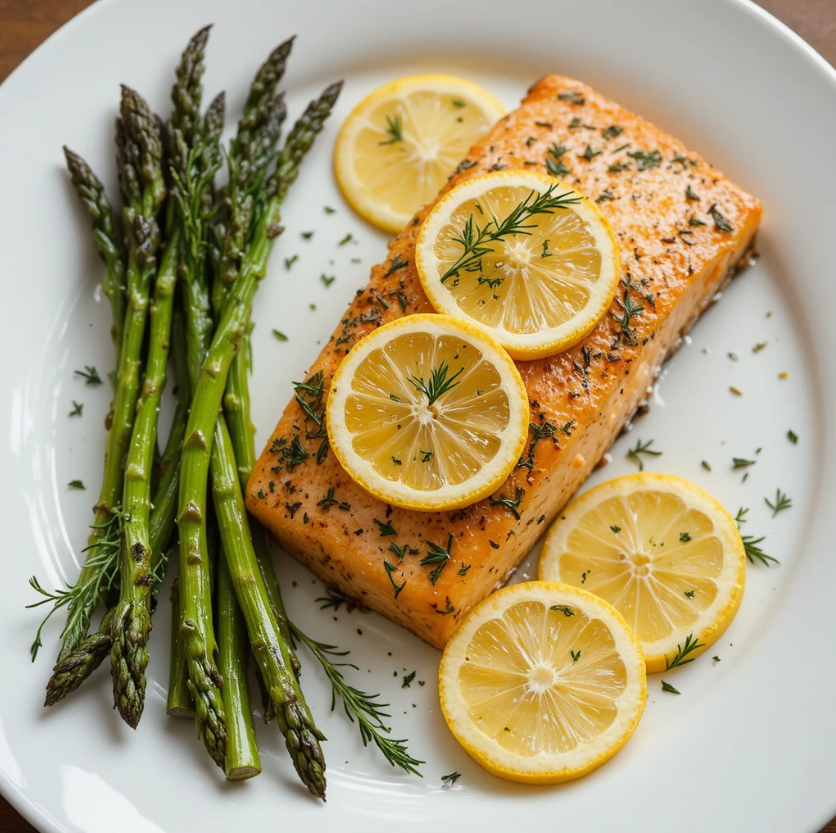
Everything You Need for Perfect Lemon Herb Salmon
Gathering your ingredients is the first step to success. The beauty of this recipe lies in its simplicity and the quality of its fresh components. You’ll likely have many of these items in your pantry already.
For the Salmon:
- 4 (6-ounce) salmon fillets, skin-on or skinless, preferably center-cut
- 2 tablespoons high-quality olive oil
- Salt and freshly ground black pepper
For the Zesty Lemon Herb Marinade:
- 3 tablespoons fresh lemon juice (from about 1 large lemon)
- Zest of 1 large lemon
- 3 cloves garlic, minced
- 2 tablespoons fresh parsley, finely chopped
- 1 tablespoon fresh dill, finely chopped
- 1 tablespoon fresh rosemary or thyme, finely chopped
- 3 tablespoons olive oil
- 1 teaspoon honey or maple syrup (optional, balances acidity)
- ½ teaspoon sea salt
- ¼ teaspoon black pepper
For Serving (Optional):
- Extra lemon wedges
- Fresh herb sprigs
- Steamed vegetables, asparagus, or a fresh green salad
Pro Tip: Using fresh herbs is non-negotiable for the vibrant flavor this dish is known for. Dried herbs simply won’t provide the same bright, aromatic punch.

Your Step-by-Step Guide to Flawless Salmon
Follow these simple, numbered steps, and you’ll be guaranteed a moist, flavorful, and perfectly cooked salmon every single time. We’ll cover pan-searing and oven-baking methods.
Step 1: Prepare the Salmon and the Marinade
- Pat the salmon fillets completely dry with paper towels. This is the most important step for getting a beautiful sear and preventing steaming. Season both sides lightly with salt and pepper.
- In a small bowl, combine the lemon zest, lemon juice, minced garlic, chopped parsley, dill, rosemary, olive oil, honey (if using), salt, and pepper. Whisk vigorously until the mixture is well emulsified.
Step 2: Marinate for Maximum Flavor
- Place the salmon fillets in a shallow dish or a large resealable plastic bag.
- Pour about two-thirds of the lemon herb marinade over the salmon, ensuring each fillet is well-coated. Reserve the remaining one-third of the marinade for serving.
- Let the salmon marinate at room temperature for 15-20 minutes. If you need longer, you can marinate in the refrigerator for up to 1 hour. Avoid marinating too long, as the acid in the lemon juice can start to “cook” the surface of the fish.
Step 3: Choose Your Cooking Method
Method A: Pan-Seared (For a Crispy Exterior)
- Heat a large skillet (preferably non-stick or a well-seasoned cast iron) over medium-high heat. Add 1 tablespoon of olive oil.
- Once the oil is shimmering, carefully place the salmon fillets in the skillet, presentation-side down. If they have skin, place them skin-side down.
- Cook without moving for 4-6 minutes, depending on thickness, until a golden-brown crust forms.
- Gently flip the fillets and cook for another 2-4 minutes on the other side, or until the salmon is cooked to your desired doneness (opaque and flaky).
Method B: Oven-Baked (For Hands-Off Ease)
- Preheat your oven to 400°F (200°C).
- Place the marinated salmon fillets on a parchment-lined baking sheet.
- Bake for 12-15 minutes, depending on thickness. The salmon is done when it flakes easily with a fork and the internal temperature reaches 125-130°F (52-54°C) for medium.
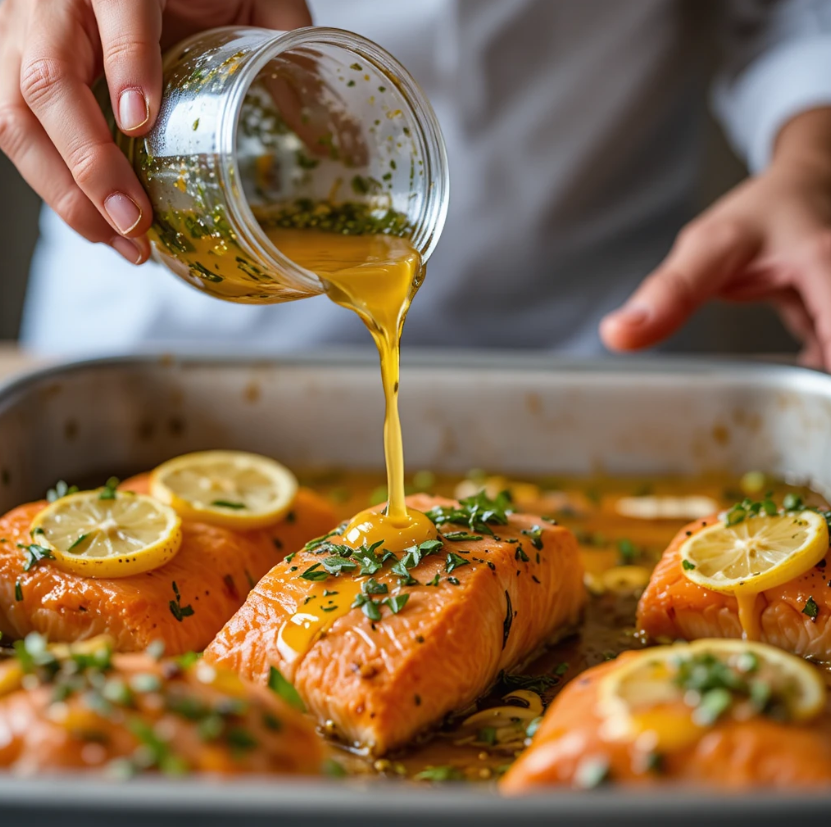
Step 4: Serve and Enjoy!
- Once cooked, transfer the salmon to serving plates.
- Drizzle the reserved, fresh lemon herb marinade over the hot fillets. This adds an incredible burst of fresh flavor.
- Garnish with extra herbs and lemon wedges. Serve immediately with your chosen sides.
Pro Tips for Lemon Herb Salmon Perfection
Even with a simple recipe, a few expert tips can elevate your dish from good to extraordinary.
Selecting the Best Salmon
- Look for Appearance: Choose fillets with a vibrant, deep pink or orange hue and firm, shiny flesh. Avoid any with gaps or discoloration.
- Check for Freshness: There should be no strong “fishy” odor. Fresh salmon smells clean, like the ocean.
- Consider Varieties: Atlantic salmon is reliably fatty and flavorful. For a richer taste, try King (Chinook) or Sockeye salmon.
Mastering Doneness: Never Overcook Again
- The Visual Test: Perfectly cooked salmon will be opaque throughout and flake easily when gently pressed with a fork.
- The Temperature Test: Use an instant-read thermometer. Insert it into the thickest part of the fillet.
- Medium-Rare: 115-125°F (46-52°C) – Very moist, deep pink center.
- Medium (Recommended): 125-130°F (52-54°C) – Moist and flaky, light pink center.
- Well-Done: 140°F (60°C) and above – Fully opaque, drier texture.
Creative Variations & Swaps
- Herb Variations: Don’t have dill or rosemary? Try thyme, basil, chives, or tarragon.
- Citrus Twist: Substitute lime or orange for the lemon for a different flavor profile.
- Creamy Sauce: Whisk a tablespoon of Dijon mustard or a splash of heavy cream into the marinade for a richer sauce.
- Sheet Pan Dinner: Add vegetables like asparagus, broccoli, or cherry tomatoes to the baking sheet for a complete, easy-cleanup meal.
Why This Dish is a Nutritional Powerhouse
This recipe isn’t just tasty; it’s a fantastic choice for your health. Salmon is one of the best sources of omega-3 fatty acids (EPA and DHA), which are crucial for heart and brain health. It’s also packed with high-quality protein, B vitamins, and potassium. The olive oil and herbs add antioxidants and healthy fats, making this a truly nourishing meal that supports overall wellness.
Your Journey to a Flawless Feast Starts Now
Congratulations! You now possess all the knowledge needed to create a spectacular Zesty Lemon Herb Salmon dinner. This recipe proves that eating healthy doesn’t mean sacrificing flavor or spending hours in the kitchen. With its bright, zesty notes and fragrant herbs, it’s a dish that delights the senses and nourishes the body.
So, what are you waiting for? Gather those fresh ingredients, fire up your stove or oven, and treat yourself to this ultimate healthy feast. Whether it’s a quiet dinner for one or a meal to impress guests, this salmon recipe is guaranteed to become a cherished staple in your cooking repertoire. Don’t forget to share your culinary creation and tag #LemonHerbSalmonFeast! Happy cooking
